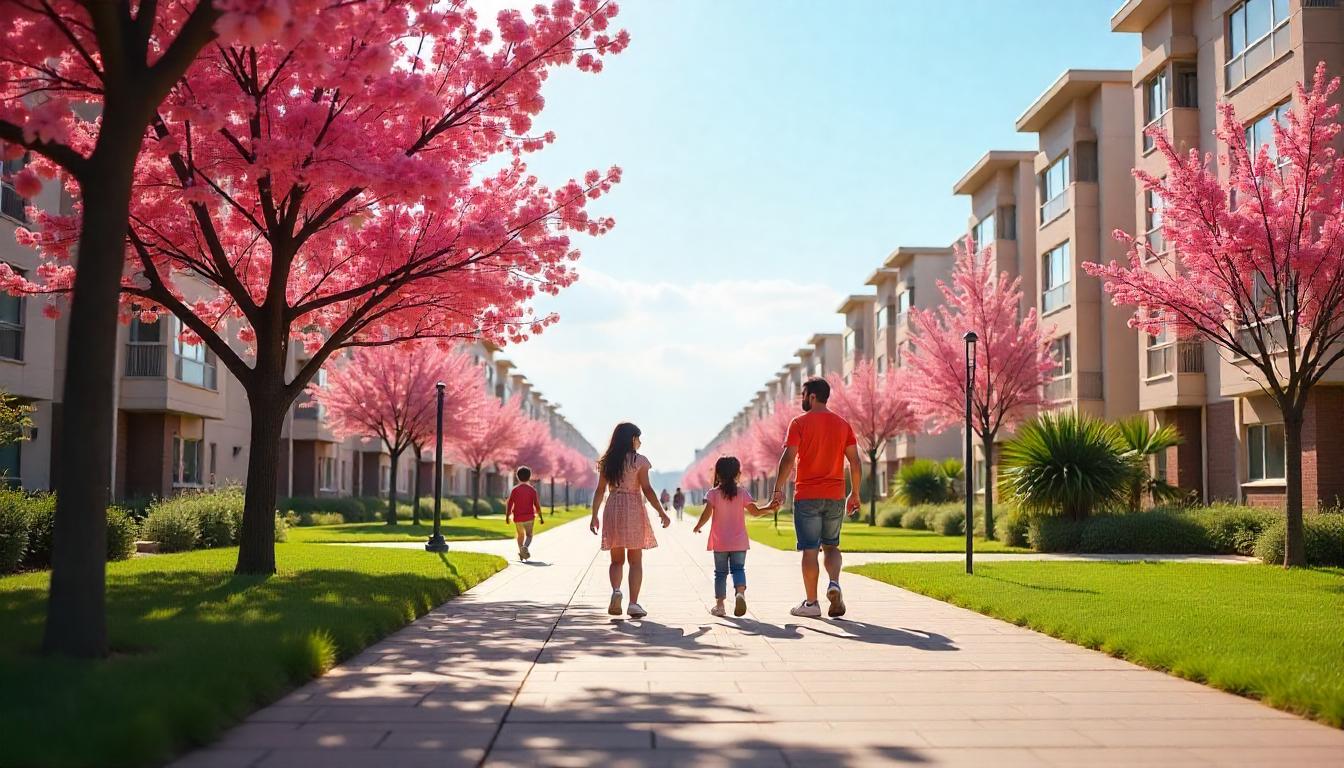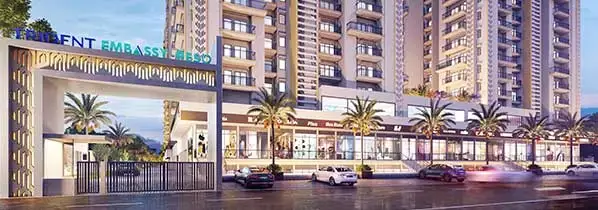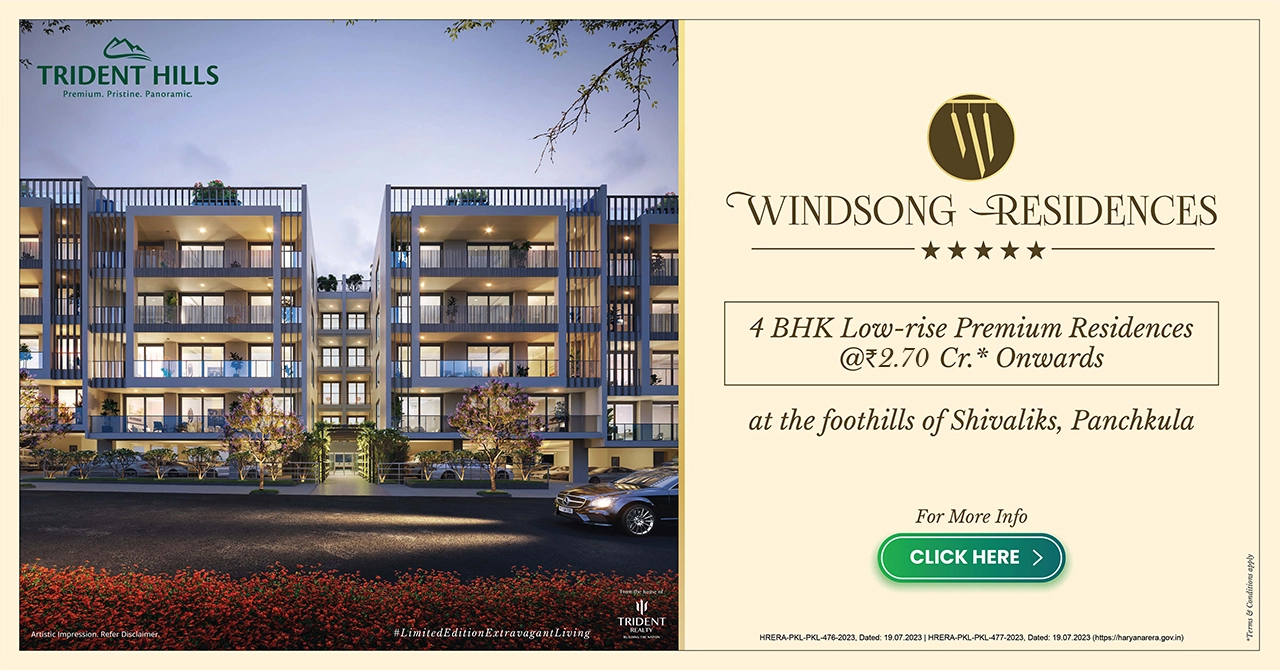
Why Plotted Developments Are Gaining Popularity in India’s Emerging Real Estate Markets
India’s New Housing Trend Is All About Owning Plots
In 2025, a quiet revolution is reshaping India’s real estate landscape. While towering skyscrapers and cookie-cutter apartments once defined urban aspirations, a new trend is taking root: plotted developments. JLL reportsthat 2, 252 acres of FY24 land deals were earmarked for plotted/residential projects, signaling a shift toward suburban and peri-urban demand. From the bustling micro-markets of Panchkula and Zirakpur to the serene outskirts of Hosur and Talegaon, Indian homebuyers spanning high-net-worth individuals (HNIs), non-resident Indians (NRIs), millennials, and the aspirational middle class are choosing land over apartments. Why? It’s not just about owning a piece of earth; it’s about crafting a lifestyle that’s uniquely their own.
Post-COVID,
the Indian homebuyer’s mindset has evolved. Cramped apartments,
shared amenities,
and high maintenance costs no longer align with the desire for space,
privacy,
and control. Plotted developments,
whether standalone plots or part of integrated townships,
offer the freedom to design one’s own home,
breathe in open spaces,
enjoy enhanced privacy,
and benefit from long-term returns
JLL India notes developers acquired over 3,
294 acres between January 2022 and October 2023,
with around 44% in Tier‑II and III cities (moneycontrol.com). This blog exploreswhy plotted developments are gaining popularity,
who is driving the demand,
and what this means for India’s emerging real estate markets.
The Changing Mindset Behind India’s Real Estate Choices
The pandemic was a turning point for Indian homebuyers. As lockdowns confined families to their apartments, the limitations of high-rise living became glaringly apparent. Small balconies doubled as workspaces, shared elevators raised health concerns, and the lack of personal space strained multi-generational households. A2023 CBRE surveyrevealed that 62% of urban Indians now prioritise larger living spaces, with 48% specifically seeking low-density environments.
This shift has fuelled a craving for independent living. Plotted developments allow buyers to break free from the uniformity of apartments, offering the canvas to build homes that reflect their personality and priorities. Whether it’s a home office for remote work, a wellness corner for yoga, or a backyard for children to play, plots provide the flexibility apartments rarely can. Moreover, the emotional allure of owning land—a tangible, generational asset—resonates deeply in a country where property is synonymous with legacy.
Why Plotted Developments Appeal Today?
What makes plotted developments so compelling in 2025? Let’s unpack the key drivers:
Land as a Tangible Asset
Unlike apartments, which depreciate over time due to wear and tear, land is a finite resource with intrinsic value. Industry reports note that land prices in emerging corridors like Hosur and Mohali outpace apartments, driven by infrastructure expansion and flexible ownership models. For buyers, owning a plot is both a financial hedge and an emotional milestone.Flexibility in Construction
Plotted developments offer unparalleled customisation. Buyers can design homes to their exact specifications—be it a G+2 structure for rental income, a vastu-compliant layout, or a minimalist bungalow. This flexibility appeals to multi-generational families who need space for elderly parents, growing children, and future expansions.Build at Your Own Pace
Unlike apartments, which require immediate full payment or EMIs, plots allow buyers to invest in land now and construct later, aligning with their financial planning. This phased approach is particularly attractive to millennials and early retirees.Privacy and Community Control
Plotted developments, especially in gated townships, offer the best of both worlds: the privacy of independent homes and the security of community living. Wide roads, green spaces, and controlled access ensure a serene, low-density environment.
Who’s Driving the Demand?
The appetite for plotted developments cuts across diverse buyer segments:
HNIs and NRIs: High-net-worth individuals and non-resident Indians view plots as safe, high-return investments. With global economic uncertainties, NRIs from the US, UAE, and UK are increasingly parking funds in Indian land, particularly in micro-markets like Panchkula and Whitefield, where infrastructure growth promises strong appreciation.
Millennials and IT Professionals:India’s young, tech-savvy workforce values individuality over conformity. A2024 Colliers India reportfound that 55% of millennials prefer custom-built homes over ready-to-move-in apartments, driven by a desire for unique designs and smart home integrations.
Aspirational Middle Class and Early Retirees: For families climbing the socio-economic ladder, owning a plot is a symbol of success. Early retirees, meanwhile, seek plots in serene locations like Talegaon or Hosur for second homes that offer peace and proximity to urban hubs.
Second-Home Buyers: The rise of hybrid work has spurred demand for weekend homes. Plotted developments in scenic or peri-urban areas cater to this trend, offering a blend of leisure and investment potential.
Plotted Developments in Integrated Townships: The New Gold Standard
While standalone plots have their charm, plotted developments within integrated townshipsare redefining premium living. These gated communities combine the freedom of plot ownership with world-class infrastructure—think wide roads, underground cabling, 24/7 security, clubhouses, and landscaped parks. Unlike traditional plotted colonies, which often lack cohesive planning, modern townships offer a curated lifestyle.
Take, for instance, the premium plotted developments in emerging hubs like Mohali or Zirakpur. These projects boast amenities like jogging tracks, amphitheatres, and community centres, appealing to buyers who want independence without sacrificing urban conveniences. A2024 JLL reporthighlighted that integrated townships in tier-2 cities saw a 25% uptick in demand, driven by their blend of privacy and community.
For investors, these townships are particularly attractive. The presence of master-planned infrastructure ensures higher resale value and rental potential, making it a win-win for both end-users and portfolio diversifiers.
Emerging Micro-Markets Are Redefining Real Estate Hotspots in India
The success of plotted developments hinges on location, and India’s emerging micro-markets are stealing the spotlight. Here’s why:
Panchkula, Mohali, and Zirakpur: Proximity to Chandigarh, robust infrastructure, and policies like Haryana’s Affordable Plotted Housing Policy 2021 have made these areas hotspots. Zirakpur, for instance, saw a 20% year-over-year price appreciation in 2024, per Prop Tiger data.
Hosur and Whitefield Outskirts:Tamil Nadu’s Hosur, dubbed the “Little Detroit” for its industrial growth, is attracting IT professionals and investors alike. Bangalore’s Whitefield outskirts offer affordable plots with easy access to tech corridors and emerging tech and IT Parks.
Talegaon and Yamuna Expressway Belt: Talegaon, near Pune, is a haven for second-home buyers, while the Yamuna Expressway belt benefits from upcoming projects like the Jewar Airport, driving land price growth.
These micro-markets share common traits: strategic connectivity, government-backed master plans, and proximity to employment hubs. For buyers, they offer the perfect balance of affordability and future growth.
Investment Perspective: Plots vs. Apartments
When evaluating real estate investments in Tricity, plotted developments often present a compelling case over apartments, particularly for long-term investors. Here’s why:
Higher Capital Growth: Plots in Mohali, especially in high-growth zones like Aerocity and IT City—are increasingly seen as appreciating assets due to limited land availability and upcoming infrastructure like the Tricity metro. While apartments remain a preferred option for many due to rental income and ease of ownership, plotted developments are gaining traction among long-term investors for their potential to deliver higher capital gains and greater flexibility over time.
Minimal Maintenance Costs: Unlike apartments, which require ongoing maintenance fees for amenities like elevators and security, plots incur negligible upkeep costs. This makes them ideal for investors seeking to hold assets for future appreciation without recurring expenses.
Strategic Flexibility: Plots offer versatility, allowing investors to lease the land, develop it into residential or commercial projects, or sell it as-is. This adaptability is particularly valuable in Tricity’s peri-urban areas, such as New Chandigarh, where infrastructure growth is unlocking new opportunities.
Strong Resale Potential: As Tricity’s urban sprawl extends to suburbs like Zirakpur and Kharar, plots in well-connected micro-markets are becoming prime assets. The planned metro and highway expansions are likely to enhance their marketability further, attracting developers and end-users alike.
Moreover, developers in emerging hubs prioritise plotted formats due to better margins and lower execution timelines. As observed by MoneyControl, referencing Knight Frank, the developer's pull toward plotted schemes is gaining momentum.
Why Is the Smart Money Moving to Plotted Communities?
As India’s real estate sector evolves, plotted developments are poised to take the lead. Here’s what the future holds:
AI-Enabled Smart Homes: Buyers are increasingly integrating AI-driven features like voice-controlled lighting and energy-efficient systems into custom-built homes, elevating plotted living to new heights.
Green-Certified Construction: Sustainability is gaining traction. Plotted developments are embracing eco-friendly designs, from rainwater harvesting to solar-powered layouts, aligning with global green standards.
Customisable Luxury: Plotted living is becoming synonymous with bespoke luxury. Buyers are commissioning architects to craft homes that blend aesthetics, functionality, and cultural nuances like Vastu Shastra.
As India urbanises, plotted developments will play a pivotal role in shaping next-generation cities, offering a harmonious blend of independence, community, and investment potential.
Conclusion: A Return to Roots, Redefined
The surge in plotted developments reflects a deeper shift in Indian homebuyer aspirations. It’s a return to the timeless value of land ownership, reimagined for the modern era. Whether it’s the freedom to build a dream home, the security of a tangible asset, or the promise of strong returns, plotted developments resonate with buyers across demographics. In emerging hubs like Panchkula, Hosur, and Talegaon, premium plotted townships are setting a new benchmark for independent living, combining privacy, infrastructure, and lifestyle in one compelling package.
For those looking to invest in their future or craft a legacy, the question isn’t whether to choose a plot over an apartment; it' s about finding the right plot in the right market. As India’s real estate story unfolds, plotted developments are writing a bold new chapter.









